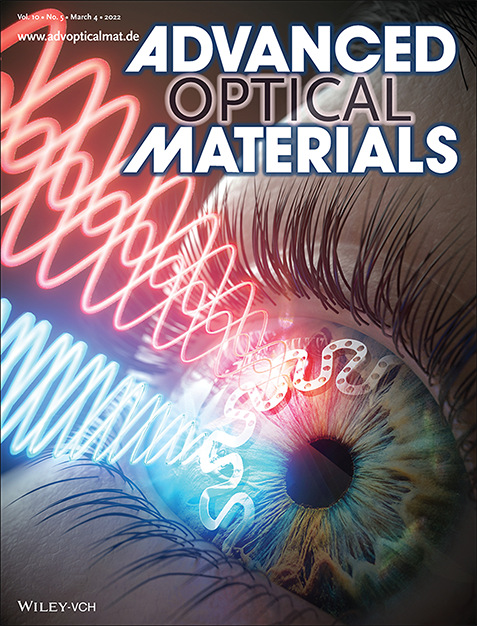
From left, Professor Sung-Hoon Ahn and Professor Heui Jae Pahk of the
Department of Mechanical Engineering, Seoul National University
A joint research team of Professor Sung-Hoon Ahn and Professor Heui Jae Pahk of the Department of Mechanical Engineering (Authors: Dr. Min-Soo Kim and Ying-Jun Quan, Researcher Hye-Sung Lee, Younggyun Cho, Jae Kyung Heo, and Seung Woo Lee) has developed a light-sensitive artificial muscle that mimics the muscles of the iris that contracts when stimulated by light.
The eye’s pupillary reflex, which is often used to identify human consciousness, occurs when the sensory organ detects light stimulation and the iris muscles contract in response to the central nervous system. In the case of animals with a relatively less developed central nervous system, they achieve pupillary reflex by the iris muscle directly sensing light and responding immediately. Therefore, there is no need for a complicated central nervous system, and the pupillary reflex can operate with a small and simple structure.
However, what if there were artificial muscles that respond immediately to the color of light, in other words, the wavelength of light? Various changes can be made according to the stimulation of light.
Based on these expectations, the research team developed a micro metal artificial muscle that responds to laser light. By introducing a metasurface to a nickel-titanium shape memory alloy with a dimension of 60 x 5 x 5 micrometers, it was designed to absorb 355 nm wavelength ultraviolet and 785 nm wavelength infrared lasers separately. Since this actuator is small in size, when light is illuminated even without an electric circuit, the temperature of the material rises, and the shape memory effect appears. The actuator generates an immense force compared to its size and has the advantage of being able to implement various deformations using light of different wavelengths.
The principle regarding the determination of the color of an object may explain the reason for why the different metasurface shape memory alloy reacts differently depending on the wavelength of light. The grid patterns measuring hundreds of nanometers (about 1/1000 the thickness of a hair) that make up the metasurface generate a plasmonic effect in which light resonates on the surface when illuminated. The plasmonic effect can be utilized to change the intrinsic light absorption/reflection characteristics of an object. For example, by adding a metasurface to gold, which is originally golden, and reflecting red wavelengths of light, the metasurface may make it appear red. Similarly, adding a metasurface to an ordinary shape memory alloy with a low absorption rate of infrared light may change it to absorb infrared light well.
To implement this, the research team designed the optical properties of the shape memory alloy metasurface based on experiments and computer simulations and implemented the nanopatterns on the surface using the focused ion beam process. The shape memory alloy ‘s degree of constringency can be controlled by adjusting the spacing of the nanopatterns.
The corresponding author, Professor Sung-Hoon Ahn stated that “this micro-artificial muscle has the characteristic of having different movements depending on the wavelength of light, due to the addition of the principle of 'metasurface' with the basic principle of shape memory alloy that reacts according to temperature. If we further develop this idea, in the future we may create a new physical artificial intelligence system that automatically responds to light without an electronic control circuit or controls movement according to differences in light wavelength, such as the iris of mice that operates without a central nervous system.”

This research was published as the cover research on March 8, 2022, in <Advanced Optical Materials>, a world-renowned international academic journal.
For further information, please contact Prof. Sung-Hoon Ahn and Prof. Heui Jae Park.


